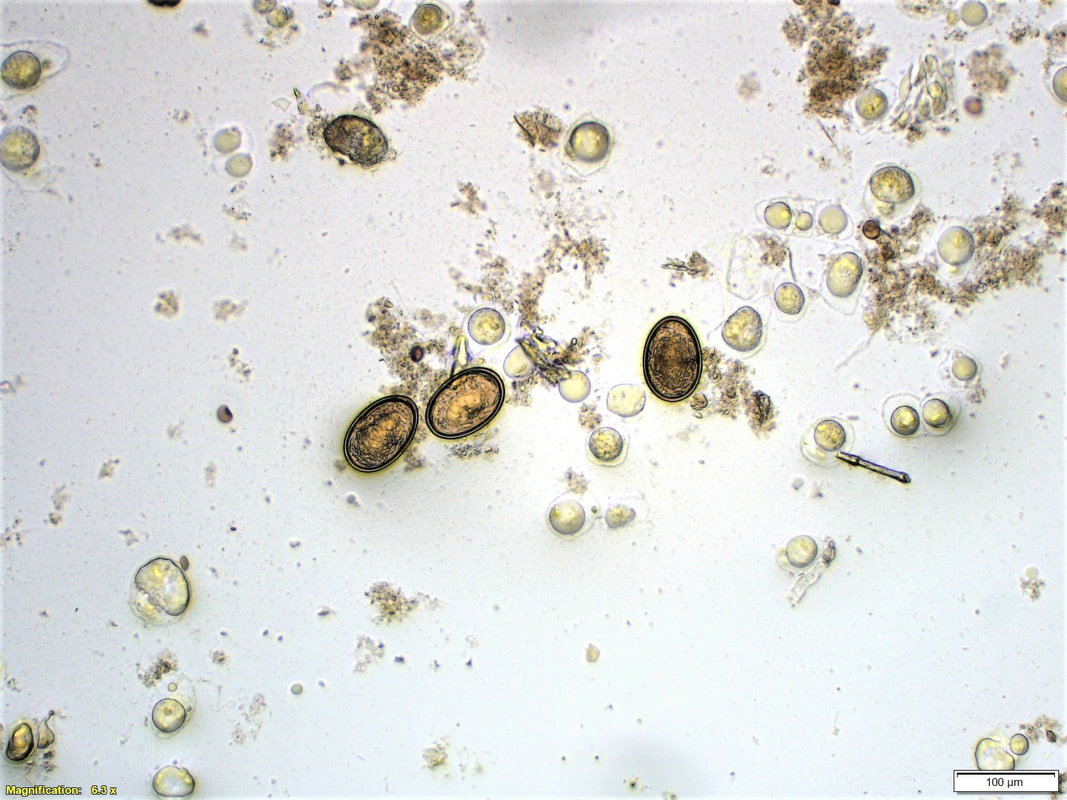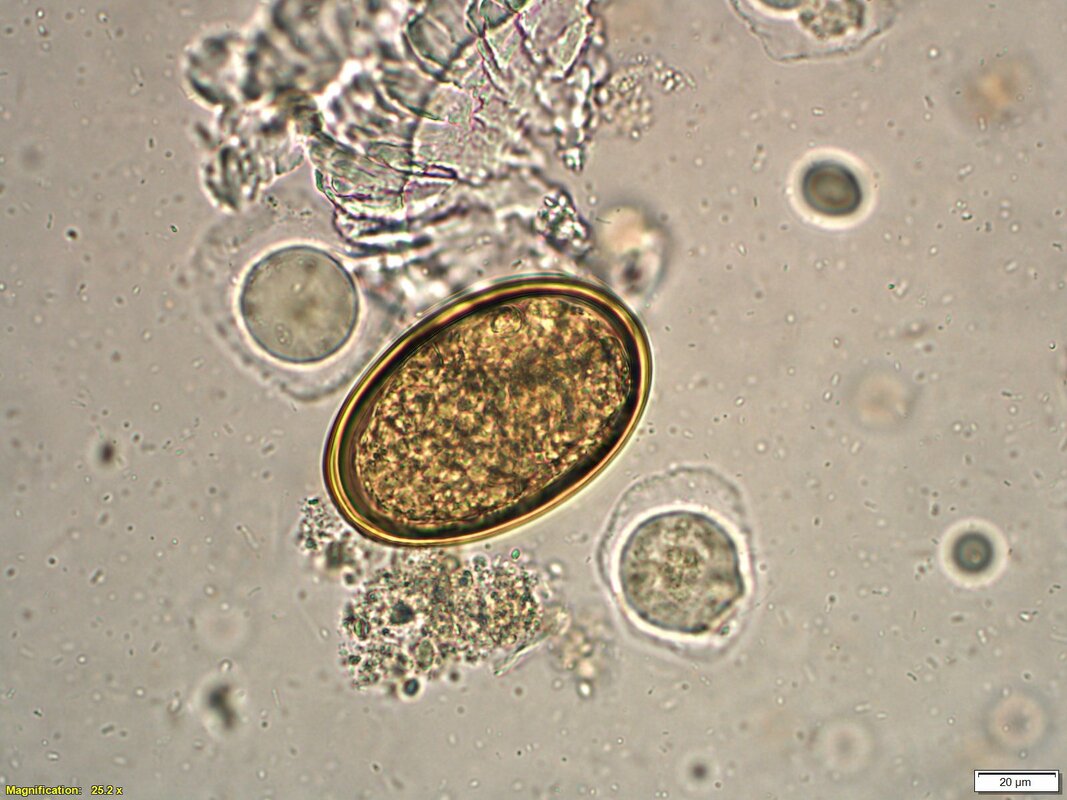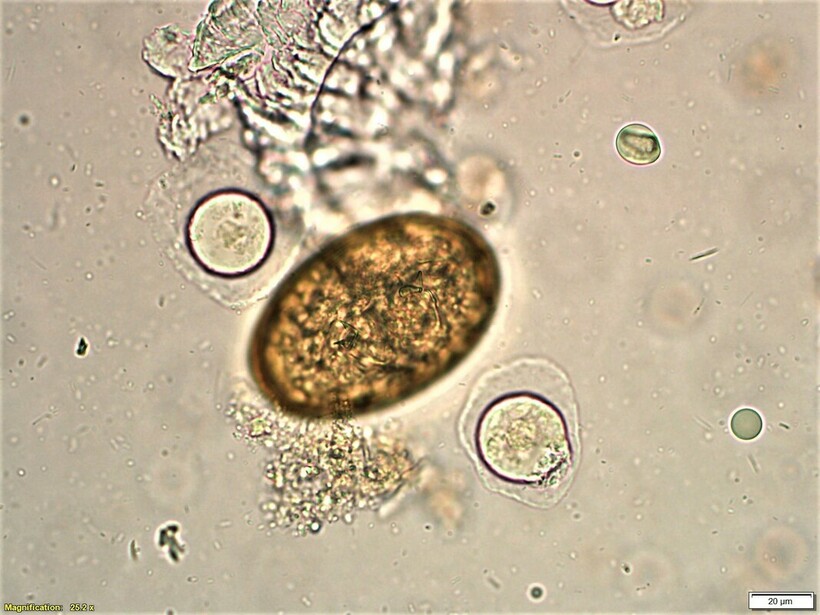Persistent mite eggs in feces of a dog?A fecal sample from an approximately 9-month-old, intact female, collie-mixed dog was submitted to the parasitology diagnostic laboratory for recheck evaluation post-treatment against persistent Dipylidium caninum and Sarcocystis spp. infection. This dog had been rescued and imported from Ethiopia to the United States 3 month prior. Centrifugal fecal flotation with Sheather's sugar solution (specific gravity, 1.25) was performed and revealed a low number of Sarcocystis spp. sporocysts and a moderate number of fairly large, oval-shaped, amber-colored, arthropod-like eggs (Figure 1 & 2). The egg shell outer wall were smooth, semi-thickened, and the embryo appeared to have 2-4 short appendages with pairs of chitinous hook-like structures visible using fine focus adjustment of the microscope at 400x magnification (Figure 2 & 3). A tentative diagnosis of pseudoparasite, most likely mite eggs, was made. Two weeks post-treatment against Sarcocystis spp. infection, a fresh fecal sample was submitted for fecal examination. The same arthropod-like eggs were still detected in a moderate to high number in addition to a low number of Sarcocystis spp. sporocysts. Figure 1: 100x magnification Figure 2: Focused on the outer egg shell wall. 400x magnification Figure 3: Focused on internal structure. Two irregularly arranged chitinous claws were seen inside the egg. 400x magnification AnswerLinguatula serrata eggs. Linguatula serrata uses carnivores, canids and rarely felids, as definitive hosts. The adult parasite can be found in the nasal airway, frontal sinus and tympanic cavity. Herbivores, such as ruminants and lagomorphs, become infected by ingesting eggs shed in the feces or nasal discharge of infected carnivores and serve as intermediate hosts by harboring encysted larvae (nymphs) in the internal organs and lymph nodes. Definitive hosts become infected by ingestion of the nymphal stages found in infected intermediate hosts. The prepatent period of this parasite is approximately 6–7 months, and adults live in definitive hosts for about 15 months. Eggs passed in the feces or nasal discharges are immediately infectious to intermediate hosts. Humans become infected by ingesting either eggs excreted by definitive hosts or nymphs in raw, undercooked viscera of intermediate hosts. Although the prevalence of this parasite is thought to be worldwide, most cases have been reported in Africa, the Middle East, and southern Asia. References: Yoko Nagamori, et al. 2019. A zoonotic parasite, Linguatula serrata, infection in a dog imported from Ethiopia to the United States. Veterinary Parasitology: Regional Studies and Reports, 16, 100273. www.sciencedirect.com/science/article/pii/S2405939018301916 |
Archives
July 2024
Have feedback on the cases or a special case you would like to share? Please email us ([email protected]). We will appropriately credit all submittors for any cases and photos provided.
|



